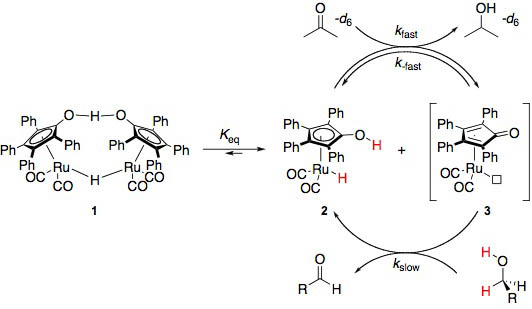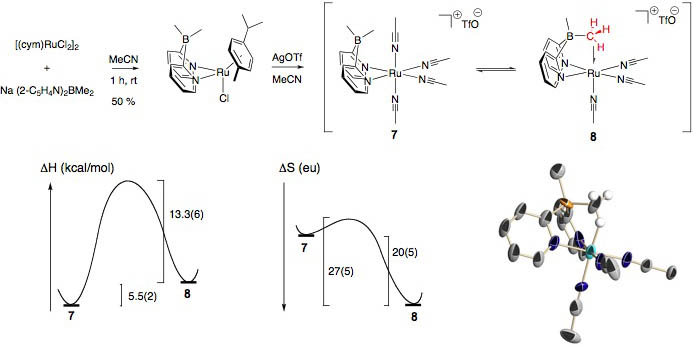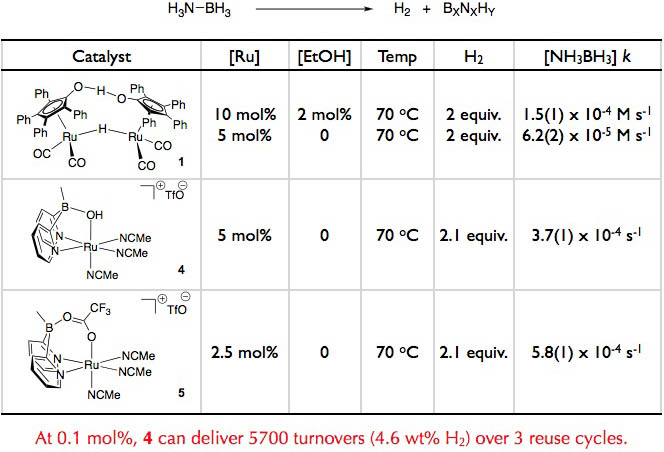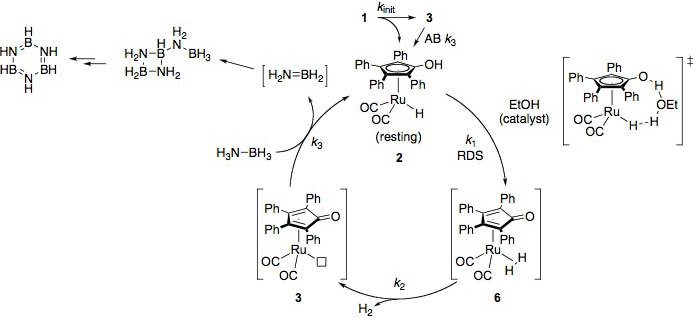About Us
Research in the Williams Group
New Approaches to Hydride Manipulation
We are developing new catalysts and conditions to manipulate hydrides such as various C-H and other X-H bonds.
Particularly, we're interested in coordinatively directed hydride abstraction and new reactions for complex molecule
synthesis that feature C-H activation. To achieve these goals, we will employ strategies of catalyst design, thus
exploring novel organometallic and coordination chemistry, and target-oriented new organic reaction development.
Mechanistic Studies of the Shvo Bifunctional Catalyst. A major emphasis of our group has been to understand the
reactivity of organometallic complexes that interact with target substrates through both their metal and ligand.
One such complex is the Shvo catalyst, 1.

New Catalyst Development. Using the Shvo chemistry as a template, we have designed a new Ru, B scaffold for manipulation
of hydride groups. This structural motif gave us the first example of an agnostic bond that is strong enough to displace
a ligand from a coordinately saturated metal center, 8. We measured the thermochemistry of this displacement by NMR inversion recovery.
 Dehydrogenation of Ammonia Borane.
Dehydrogenation of Ammonia Borane. We have applied our catalyst systems to a number of reactions, most notably the dehydrogenation
of ammonia borane, a prospective hydrogen storage material. DOI: 10.1021/ja2058154 Our best catalytic systems are air stable, reusable,
and can liberate up to 4.6 weight per cent H2 from an ammonia borane slurry.

Mechanistic Elucidation. We are uncovering the mechanistic details of ammonia borane dehydrogenation as part of our
ongoing project to understand and utilize hydride transfer reactions that are catalyzed by buifunctional transition metal complexes.

Chemical Probes for Biology and Medicine
Simultaneously and synergistically with our organometallic work, we are devising conceptually novel chemical tools for research and clinical use.
Along these lines, we are currently developing the first ultrasound-activated MRI contrast agent.